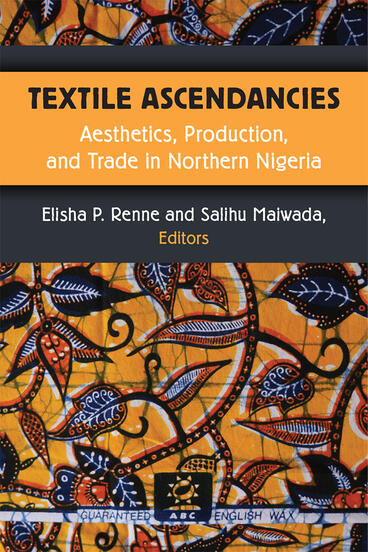Textile Ascendancies
Aesthetics, Production, and Trade in Northern Nigeria
The authors examine handwoven and manufactured textiles, aesthetic preferences as well as textile production, and trade in northern Nigeria
Description
Until this century, Northern Nigeria was a major center of textile production and trade. Textile Ascendancies: Aesthetics, Production, and Trade in Northern Nigeria examines this dramatic change in textile aesthetics, technologies, and social values in order to explain the extraordinary shift in textile demand, production, and trade.
Textile Ascendancies provides information for the study of the demise of textile manufacturing outside Nigeria. The book also suggests the conundrum considered by George Orwell concerning the benefits and disadvantages of “mechanical progress,” and digital progress, for human existence. While textile mill workers in northern Nigeria were proud to participate in the mechanization of weaving, the “tendency for the mechanization of the world” represented by more efficient looms and printing equipment in China has contributed to the closing of Nigerian mills and unemployment.
Textile Ascendancies will appeal toanthropologists for its analyses of social identity as well as how the ethnic identity of consumers influences continued handwoven textile production. The consideration of aesthetics and fashionable dress will appeal to specialists in textiles and clothing. It will be useful to economic historians for the comparative analysis of textile manufacturing decline in the 21st century. It will also be of interest to those thinking about global futures, about digitalization, and how new ways of making cloth and clothing may provide both employment and environmentally sound production practices.
Elisha P. Renne is Professor Emerita of Anthropology and Afroamerican and African Studies, University of Michigan.
Salihu Maiwada is Professor of Industrial Design, Ahmadu Bello University.
Reviews
“Textile Ascendancies is an empirically rich, beautifully illustrated collection of essays that explores the meanings, making and trading of cloth in northern Nigeria over more than a century. The collection’s contribution to the history of aesthetics, commodity meanings and commercial transactions in Africa is profound. There is no other book that attempts such an ambitious agenda, exploring the diverse histories of any product over such a long period of time.”
—Laura Fair, Michigan State University
“A detailed African textile history that provides rich insights into the history of handweaving, dyeing, and local aesthetics.”
—Karen Tranberg Hansen, Northwestern University
Supplemental Materials
Please see our Fulcrum platform for additional resources related to this title.

